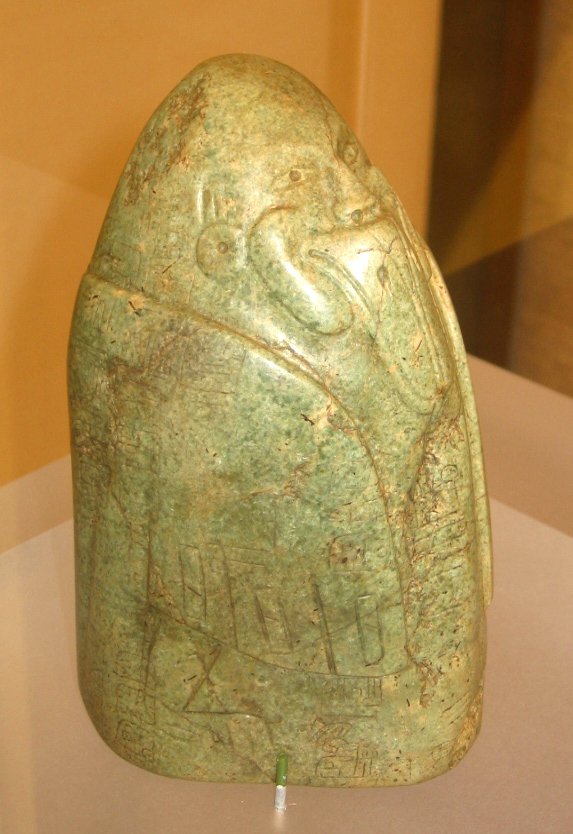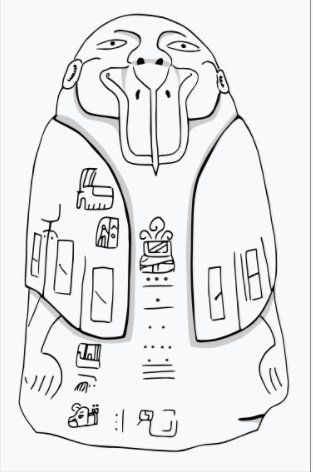Strange Tuxtla Statuette And Its Undeciphered Inscription – An Epi-Olmec Puzzle
Ellen Lloyd - AncientPages.com - The Tuxtla statuette is a strange ancient artifact left by a culture we still know very little about. Who was this bullet-shaped being with wings wearing a duckbill mask? Is the undeciphered script on the statuette some charm or magical incantation?
A side view of the Tuxtla Statuette. Credit: Wikipedia
This curious artifact was discovered in 1902 by a farmer plowing his field in the western foothills of the Tuxtlas mountains in Veracruz, Mexico. Examinations of the statuette revealed it was an artifact made by the Epi-Olmec culture. Certain Maya scholars had difficulties accepting the artifact pre-date the Maya, but upon further investigations, scholars confirmed the antiquity of the Tuxtla statuette.
The Epi-Olmec culture was a successor culture to the Olmec. They lived in the central region of the present-day Mexican state of Veracruz from about 300 B.C to roughly 250 C.E.
The Epi-Olmec culture never attained the far-reaching achievements as the Olmec, but they did develop sophisticated calendars and writing system.
Their mysterious Isthmian script still remains undeciphered. The Isthmian script is structurally similar to the Maya script, and like Maya uses one set of characters to represent logograms (or word units) and a second set to represent syllables. This suggests these two writing systems developed together. Both systems have the Long Count calendrical system fixed with a zero date. This type of Meso-American writing was often used to record specific events and carved on stone stelae that serve as durable memorials to rules and symbols of political and religious legitimacy.
Frontal view of the Tuxtla Statuette. Note the Mesoamerican Long Count calendar date of March 162 CE (8.6.2.4.17) down the front of the statuette. Credit: Wikipedia
Unfortunately, there are very few surviving examples of the Isthmian script, making the deciphering process even harder.
Tuxtla statuette is incised with 75 glyphs. Its glyphs include the Mesoamerican Long Count calendar date of March 162 AD, which in 1902 was the oldest Long Count date yet discovered. The round statuette is only 6 inches (16 cm) and made of nephrite, greenstone, similar to jade, but not as hard.
The problem is that no-one really knows who the Tuxtla statuette depicts. Most researchers believe the statuette represents a shaman wearing a bird mask and bird cloak.
Written by Ellen Lloyd – AncientPages.com
Updated on July 10, 2021
Copyright © AncientPages.com All rights reserved. This material may not be published, broadcast, rewritten or redistributed in whole or part without the express written permission of AncientPages.com
More From Ancient Pages
-
 Dangerous Anomaly Inside Mysterious European Mountain Remains Unexplained – Unusual Ancient Connections – Part 1
Featured Stories | Mar 13, 2021
Dangerous Anomaly Inside Mysterious European Mountain Remains Unexplained – Unusual Ancient Connections – Part 1
Featured Stories | Mar 13, 2021 -
 Huangluo: Long-Hair Village Where Women Don’t Cut Their Hair – A 2,000-Year-Old Tradition Of The Yao People
Ancient Traditions And Customs | Jun 18, 2017
Huangluo: Long-Hair Village Where Women Don’t Cut Their Hair – A 2,000-Year-Old Tradition Of The Yao People
Ancient Traditions And Customs | Jun 18, 2017 -
 Mystery Of The Ancient Bear Bones In The Aleutian Islands, Alaska
Archaeology | Oct 5, 2023
Mystery Of The Ancient Bear Bones In The Aleutian Islands, Alaska
Archaeology | Oct 5, 2023 -
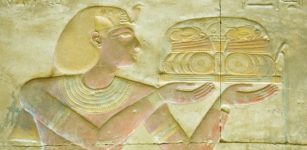 Table Manners And First Code Of Correct Behavior Were Introduced In Egypt 2,500 B.C. By Ptahhotep
Ancient History Facts | Oct 26, 2020
Table Manners And First Code Of Correct Behavior Were Introduced In Egypt 2,500 B.C. By Ptahhotep
Ancient History Facts | Oct 26, 2020 -
 New Clues To Behavior Of Neanderthal Hunting Parties
Archaeology | Mar 27, 2023
New Clues To Behavior Of Neanderthal Hunting Parties
Archaeology | Mar 27, 2023 -
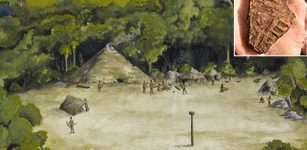 Uncovering The Lost Indigenous Settlement Of Sarabay, Florida
Archaeology | Jun 9, 2021
Uncovering The Lost Indigenous Settlement Of Sarabay, Florida
Archaeology | Jun 9, 2021 -
 Demon Oni: Cruel Harbinger Of Disease And Misfortune In Japanese Folklore
Featured Stories | Dec 2, 2019
Demon Oni: Cruel Harbinger Of Disease And Misfortune In Japanese Folklore
Featured Stories | Dec 2, 2019 -
 Impressive Column Of Emperor Marcus Aurelius – War Monument From Ancient Rome
Featured Stories | Jul 6, 2017
Impressive Column Of Emperor Marcus Aurelius – War Monument From Ancient Rome
Featured Stories | Jul 6, 2017 -
 Pythagorean Cup Was A Practical Joke To Punish Greedy Drinkers And It Still Fools People
Ancient History Facts | Dec 18, 2020
Pythagorean Cup Was A Practical Joke To Punish Greedy Drinkers And It Still Fools People
Ancient History Facts | Dec 18, 2020 -
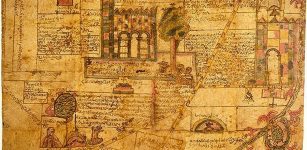 What Does The Mexican Codex Map Represent?
Ancient History Facts | May 21, 2018
What Does The Mexican Codex Map Represent?
Ancient History Facts | May 21, 2018 -
 Ancient Irrigation System Could Boost Water Availability In Peru
Archaeology | Jun 26, 2019
Ancient Irrigation System Could Boost Water Availability In Peru
Archaeology | Jun 26, 2019 -
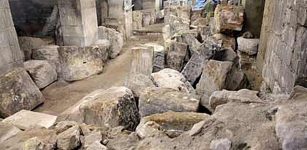 Archaeologists Excavate Two Roman Bath Hidden In A Dark Passage Below The Streets Of Bath
Archaeology | Apr 26, 2016
Archaeologists Excavate Two Roman Bath Hidden In A Dark Passage Below The Streets Of Bath
Archaeology | Apr 26, 2016 -
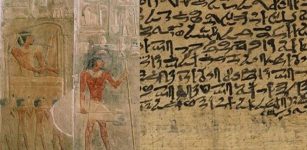 Secrets Of Maxims Of Ptahhotep – Ancient Egyptian Wisdom Is Still Relevant Today
Artifacts | Mar 10, 2018
Secrets Of Maxims Of Ptahhotep – Ancient Egyptian Wisdom Is Still Relevant Today
Artifacts | Mar 10, 2018 -
 Scientists Found A Link Between Ancient Human Teeth And An Extinct Reptile
Archaeology | Jan 10, 2022
Scientists Found A Link Between Ancient Human Teeth And An Extinct Reptile
Archaeology | Jan 10, 2022 -
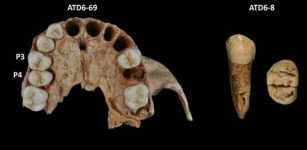 Neanderthals Are Not The Only Species Whose Dentition Is Characterized By The Possession Of Thin Enamel
Archaeology | Jan 19, 2023
Neanderthals Are Not The Only Species Whose Dentition Is Characterized By The Possession Of Thin Enamel
Archaeology | Jan 19, 2023 -
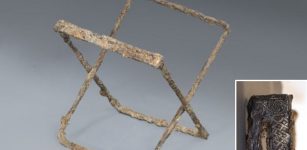 Extremely Rare Medieval Folding Chair Reveals Its Secrets
Archaeology | Oct 13, 2023
Extremely Rare Medieval Folding Chair Reveals Its Secrets
Archaeology | Oct 13, 2023 -
 Maya Site With At Least 300 Buildings Some Of Which Are Over 8 Meters High – Discovered
Archaeology | Sep 16, 2022
Maya Site With At Least 300 Buildings Some Of Which Are Over 8 Meters High – Discovered
Archaeology | Sep 16, 2022 -
 Native American Tradition Of A Vision Quest – How To Enter The Spiritual World
Ancient History Facts | Apr 25, 2017
Native American Tradition Of A Vision Quest – How To Enter The Spiritual World
Ancient History Facts | Apr 25, 2017 -
 Was Napoleon Bonaparte Defeated At Waterloo Because Of Volcanic Eruption?
Archaeology | Aug 22, 2018
Was Napoleon Bonaparte Defeated At Waterloo Because Of Volcanic Eruption?
Archaeology | Aug 22, 2018 -
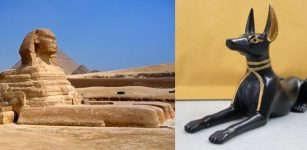 What Was The Sphinx And What Is Wrong With Its Body And Head?
Civilizations | Apr 6, 2017
What Was The Sphinx And What Is Wrong With Its Body And Head?
Civilizations | Apr 6, 2017

